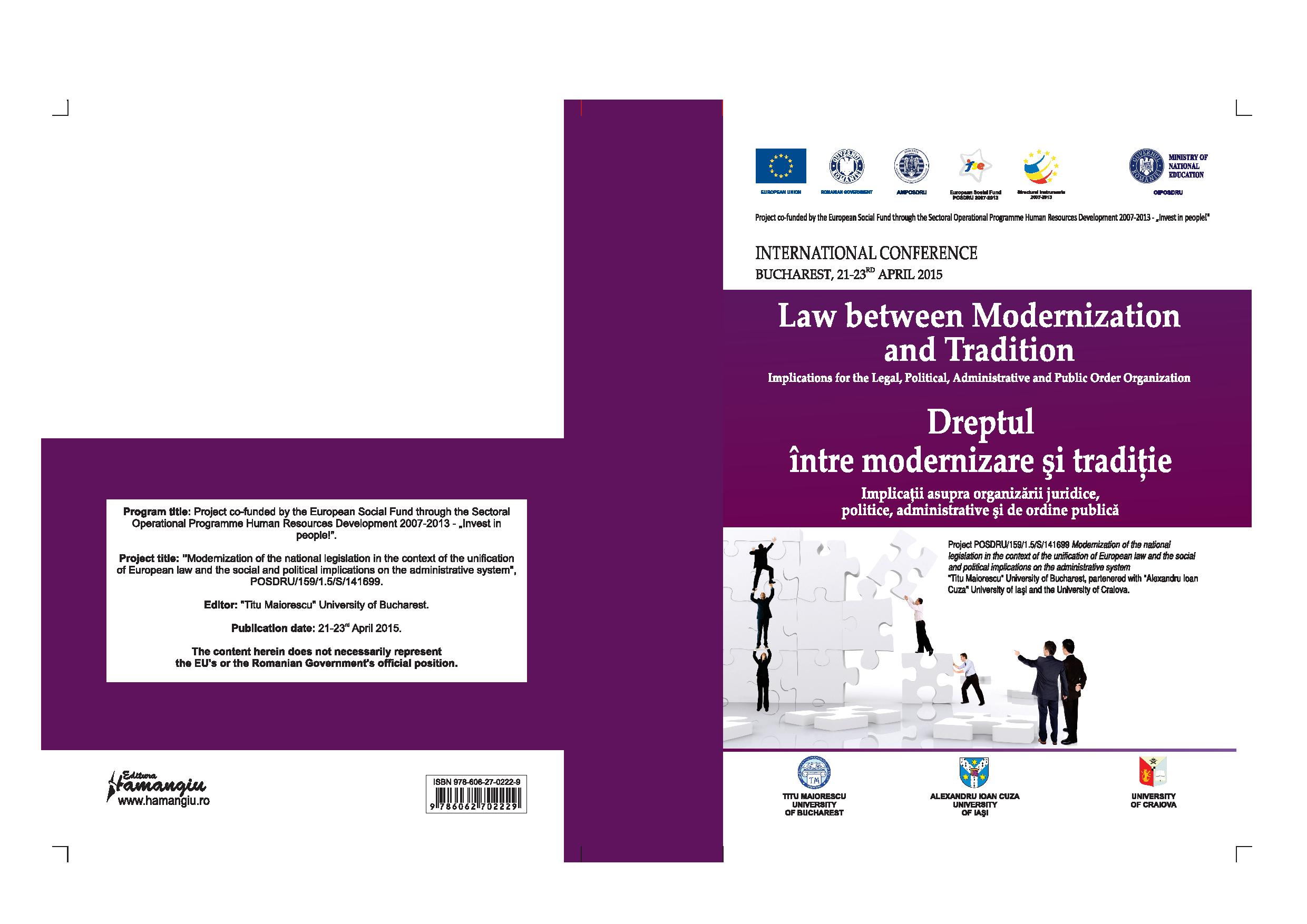PROCEDURAL ASPECTS THAT LED TO THE MODERNIZATION OF THE LEGISLATION REGARDING THE CONCLUSION OF ADMISSION IN PRINCIPLE RULED IN THE PARTITION PROCESS
PROCEDURAL ASPECTS THAT LED TO THE MODERNIZATION OF THE LEGISLATION REGARDING THE CONCLUSION OF ADMISSION IN PRINCIPLE RULED IN THE PARTITION PROCESS
Author(s): Raluca Lucia CismaruSubject(s): Civil Law
Published by: Editura Hamangiu S.R.L.
Keywords: conclusion of admission in principle; additional conclusion of the admission in principle; res judicata; appeal;
Summary/Abstract: The modernization of the national legislation was a necessary measure in the matter of the conclusion of admission in principle of the judicial partition. Thus, under certain conditions, the partition process comprises two stages: the admission in principle stage and the partition itself stage. This way of settling the partition was introduced by article 4 from Law no. 603/1943, regarding the simplification of the procedures of the judicial partition and was subsequently taken by article 673 from the old Code of Civil Procedure, as it was modified and completed through the Government Emergency Ordinance no. 138/2000. This latest legal disposition refered to the conclusion through which the court designated to solve the partition request was going to rule. This conclusion was meant to set up the general frame in which the partition process would take place, before ruling a decision about the core.Currently, the admission in principle is done through a conclusion that has a legal denomination, established by the dispositions of article 984 from the new Code of Civil procedure, and article 985 from the same Code refers to the additional conclusion of the admission in principle. From the dispositions of articles 984-986 of the new Code of Civil Procedure, it results that the new regulation keeps the same regime regarding the compulsoriness of the conclusion of the admission in principle. Thus, if the court has enough evidence, it can proceed to solve the core and rule the final decision.
Journal: Conferința Internațională de Drept, Studii Europene și Relații Internaționale
- Issue Year: III/2015
- Issue No: III
- Page Range: 369-379
- Page Count: 11
- Language: English

